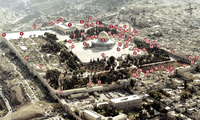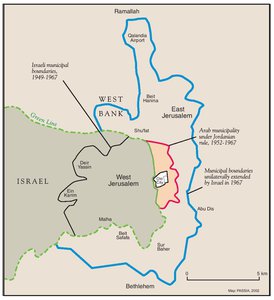JERUSALEM AFTER THE 1967 WAR
Map Details
The British Mandate for Palestine, with its capital in Jerusalem, was guided by the terms of the 1919
Versailles Treaty, and as such constituted, in legal terms, a ‘protectorate’ rather than a sovereign construct
or a belligerent occupation. Thus, when Israeli forces occupied the entire West Bank and Gaza
in June 1967, East Jerusalem came under a truly belligerent foreign occupation for the first time since the
crusader kingdoms of the 12th Century. The subsequent decisions of the Israeli Knesset to illegally expand
the municipal area of the conquered city and thereafter annex it to the sovereignty of Israel led to drastic
alterations in the city, its surrounding villages and the integrated towns lying beyond it in the West Bank.
Israel’s immediate excesses in the occupied Old City left thousands of Palestinians homeless, entire historic
quarters in rubble and holy sites under enforced closure, compelling international leaders and religious
figures to speak out in horror. At the same time, the Knesset commissioned a committee to
redraw the municipal limits of the city. This process, conducted under the supervision of Gen. Rehav’am
Ze’evi, a later proponent of the forced expulsion from Israel and the OPT of all non-Jews, was guided by
two overarching imperatives. On the one hand, military strategists sought to extend the city’s reach to
control the valleys, routes and hilltops comprising the defensive points to the east and north, and including
the Qalandia airport at the northernmost limit. On the other hand, the ethnic exclusivity upon which the
Jewish state depended proscribed the inclusion within this area of a large number of non-Jews. Israel’s race
to redraw the city and invert its long-standing demography was spurred on by an anxiety, in the end
unfounded, that the international community would act to protect the city and its holy sites, potentially
stalling Israeli plans at a point when the demographic facts would give the lie to Israeli claims over the city.
On 28 June 1967, the Knesset amended its 1950 Basic Law on Jerusalem, which proclaimed the city the
capital of Israel, expanding its remit to a 70 km2 expanded area defined by the Ze’evi committee and
conjoining this with the 38 km2 area of West Jerusalem, to create a 108 km2 municipal Jerusalem. The
following day, Israel dismissed the Arab Jerusalem Municipality. The new Jerusalem limits carefully skirted
the built-up villages and neighborhoods included in the East Jerusalem Kendall Town Plan of 1966 , while incorporating the lands alone of 28 villages and large stretches of the municipal areas of
Bethlehem and Ramallah. Limiting the non-Jewish population in this area while seizing their land saw Israel
create an East Jerusalem of more than 1,000% the area of that which preceded the occupation, while
increasing its non-Jewish population by less than 50%.
After the expansion, Israel ordered a census of the city, registering only the 66,000 Palestinians present
within the new area at that time and arbitrarily excluding an estimated 27,000 Palestinians; who had fled the
war and were awaiting the opportunity to return home or were living abroad at the time of the census. The
census was the sole registration procedure offered the non-Jewish population and left those absent at the
time, as well as spouses and children of Jerusalemites, dependent on a procedure of ‘family reunification’
operated by the Israeli Minister of Interior for registration. The ID cards issued to Jerusalem’s Palestinians
identified them as residents of the city, but not as citizens of the state, thereby classifying them as
‘foreigners’ within their own city and depriving them of the basic civil liberties enjoyed by Jewish residents of
the city, including those settlers occupying the new projects being founded upon their expropriated land.
With the approval by the Knesset of the expanded Jerusalem boundaries, land confiscation and settlement
planning in the east commenced apace as Israel sought to create a de facto Judaization of the entire city,
forcing its non-Jews into the militarily administered West Bank hinterland through the adoption of draconian
restrictions on Palestinian movement, building, and commerce. In the three years
following the occupation, over 18,000 dunums of Palestinian land were confiscated for the creation of
settlements around the city. When an ad hoc Palestinian National Guidance Committee was established in
August 1967, with the aim of independently organizing Palestinian civil life in the city, Israel responded by
exiling its head, Sheikh Abdul Hamid As-Sayeh, in a bid to deny voice to non-compliant Palestinian leaders
that foreshadowed a consistent Israeli policy aimed at eroding all Palestinian political activity in the city.
Though Israel’s actions and accompanying legislation created a de facto annexation of the expanded
municipal area of Jerusalem almost immediately, it was not until July 1980 that the Knesset formalized this
status, adopting a further amendment to the Basic Law on Jerusalem to declare the entire illegally and
unilaterally expanded area the ‘eternal and undivided’ capital of the Jewish state. Being a flagrant violation
of the Geneva and Hague Conventions, as well as a blunt dismissal of numerous UNSC and UNGA
demands for a cessation and reversion of its discriminatory policies in the city, the 1980 annexation was
condemned by the UNSC immediately, with a Resolution declaring, “that all legislative and administrative
measures and actions taken by Israel, the occupying power, which have altered or purport to alter the
character and status of the Holy City of Jerusalem, and, in particular, the recent ‘Basic Law’ on Jerusalem,
are null and void and must be rescinded forthwith.”
Related Maps

ISRAEL'S SEPARATION BARRIER, 2002
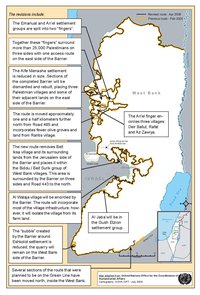
REVISED ROUTE OF THE ISRAELI SEPARATION BARRIER, 2006
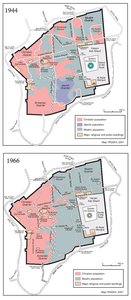
THE OLD CITY, 1944 & 1966
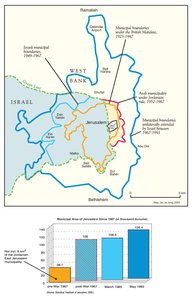
MUNICIPAL BOUNDARIES OF JERUSALEM, 1947-2000
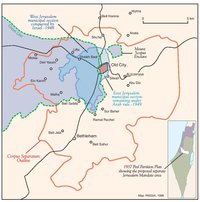
JERUSALEM AND THE CORPUS SEPARATUM PROPOSED IN 1947
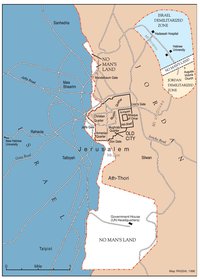
PARTITIONED JERUSALEM, 1948-1967
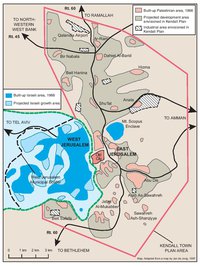
THE KENDALL TOWN SCHEME, 1966
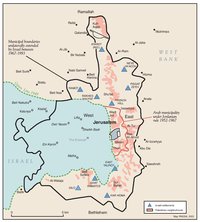
ISRAELI SETTLEMENTS AND PALESTINIAN NEIGHBORHOODS IN EAST JERUSALEM, 2000
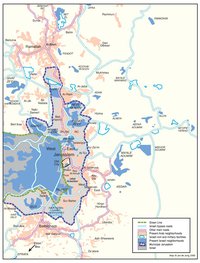
ISRAELI SETTLEMENTS AND PALESTINIAN NEIGHBORHOODS IN METROPOLITAN JERUSALEM, 2000
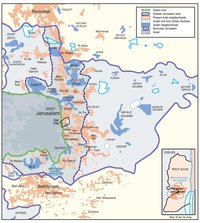
ARAB EAST JERUSALEM WITHIN ‘GREATER’ JERUSALEM, 2000
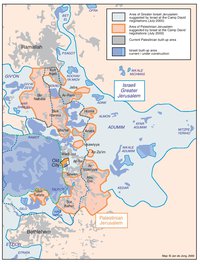
PROJECTION OF THE ISRAELI PROPOSAL FOR JERUSALEM’S FINAL STATUS AT CAMP DAVID, JULY 2000
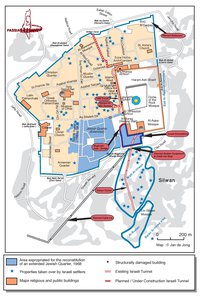
SETTLEMENT ACTIVITY IN THE OLD CITY
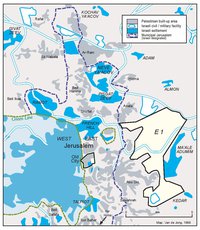
THE E-1 DEVELOPMENT PLAN
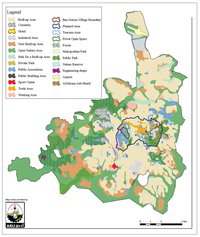
THE JERUSALEM MASTER PLAN
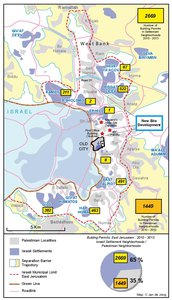
JERUSALEM TODAY (2014)
